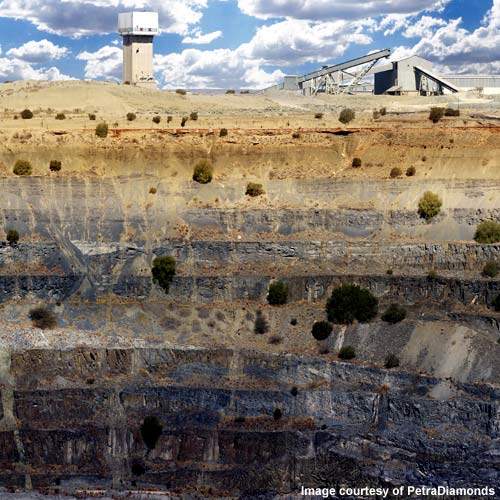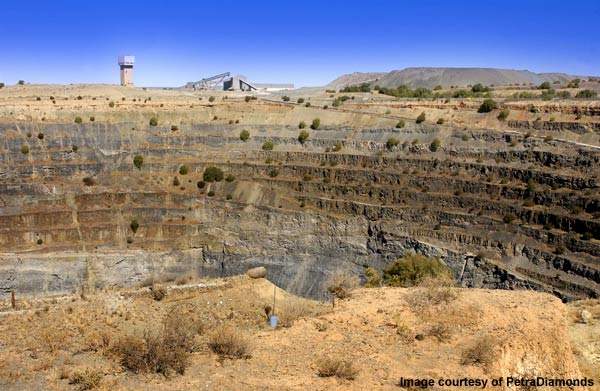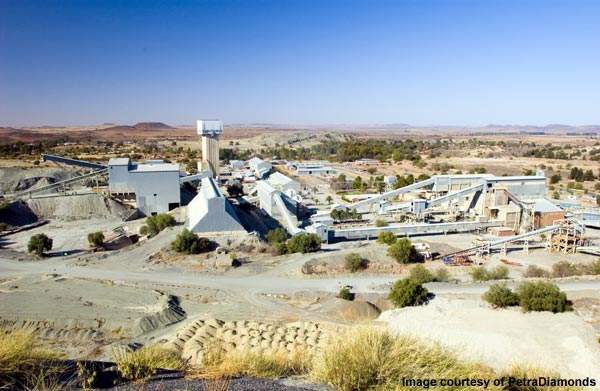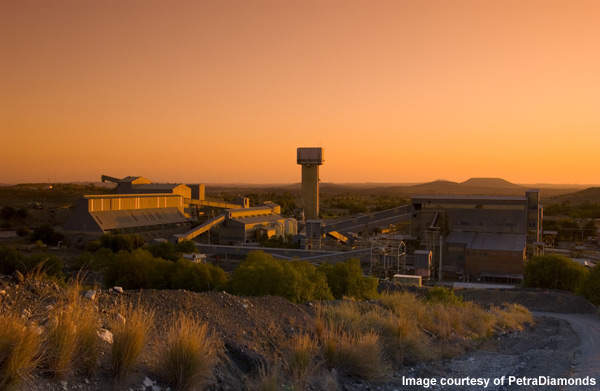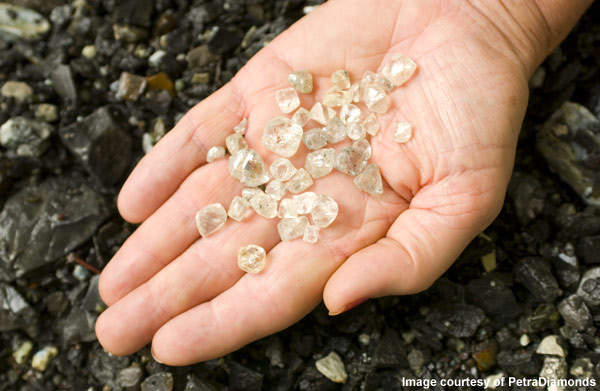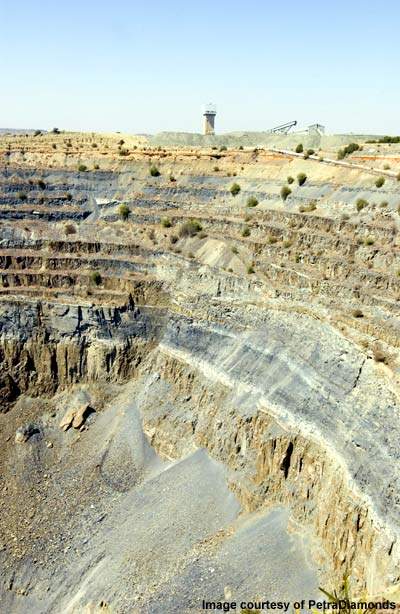Koffiefontein is one of the largest kimberlite diamond mines in the world by average value a carat. Discovered in 1870, the underground mine is situated 110km south-east of Kimberley, South Africa. The mine neighbours some of Kimberley’s famous mines, including Kimberley, de Beers, Dutoitspan, Bultfontein and Wesselton mines.
The mine is a joint-ownership between Re-Teng Diamonds (30%) and Petra Diamonds (70%). It is operated solely by Petra Diamonds, who acquired the mine from De Beers in 2007 for R81.9m. Based on its current resources, the mine has an estimated life of more than 20 years.
Koffiefontein mine reserves
The mine respectively holds 0.3mt of proven and 8.8mt of probable reserves graded at 7.5 carats per hundred tonnes (cpht) and 8.7cpht .
Measured, indicated and inferred resources at the mine total 154.5mt at a grade of 4.3cpht. Main Pipe 600 to 720 was moved to inferred resource and the base of the resource was lowered to 720m, on the basis of new sampling.
Koffiefontein mine geology
The deposit is hosted as kimberlite ore body within the Koffiefontein pipe, which extends 11.1ha at surface level. The pipe, together with several other kimberlite pipes and dykes, forms a cluster that intrudes dwyka shales and karoo dolerites. It is characterised by carbonaceous and Karoo age shales besides intercalated dolerite that overlies the granite gneiss basement.
A second pipe, extending 6ha on the surface, lies adjacent to the Koffiefontein pipe. Known as Ebenhaezer pipe, it also hosts kimberlite ore body.
Diamond mine production
The mine produces high-value diamonds, including white diamonds sized between five and 30 carats. In 2009, the mine produced 52,089 carats graded at 6.6cpht, a reduction from the 89,622 carats production achieved in 2008. Delays in producing from new sections on level 49 and 52 resulted in the decline. Production at the mine was 948,000t a year.
Current production levels at the mine are expected to continue from the pipe’s east and west extensions and the recovery segments at level 52. Grades will remain the same.
By extending to level 68, the mine will produce 1.2mt a year for more than 20 years, delivering 104,000 ROM carats a year.
The mine produced 17,502 ROM carats graded at 7.1cpht in FY 2014. The production will be increased from 50,375ctpa in FY 2014 to 100,000ctpa by FY 2017 under Petra’s expansion plan.
Koffiefontein mine operations
The mine is a typical underground operation developed using front cave mining methods. Approximately 100m-high ore blocks are extracted between levels 37, 48 and 49.
Access to underground operations is achieved through a roadway that descends down to level 52, approximately 520m below surface and No 2 main rock shaft. Hauling up is carried out via a vertical shaft that declines to a depth of 620m.
In addition to the underground operation at Koffiefontein pipe, the mining is currently taking place at Ebenhaezer pipe.
Koffiefontein diamond mine history
The Koffiefontein mine was identified as a pipe in 1880, nine years after it was discovered. Mining began in 1887 and the mine was acquired by De Beers by 1911. It operated as an open-pit mine until 1981.
On completion of the open-cast operations, the mine had a surface area of 44ha with a diameter of 750m and a depth of 270m. Underground mining began in 1981. Due to economic factors, the mine has been closed several times.
The mine produces the highest value diamonds than other kimberlite mines in the world. The largest rough diamond recovered at the mine was in 1994 and weighed 232.34 carats.

